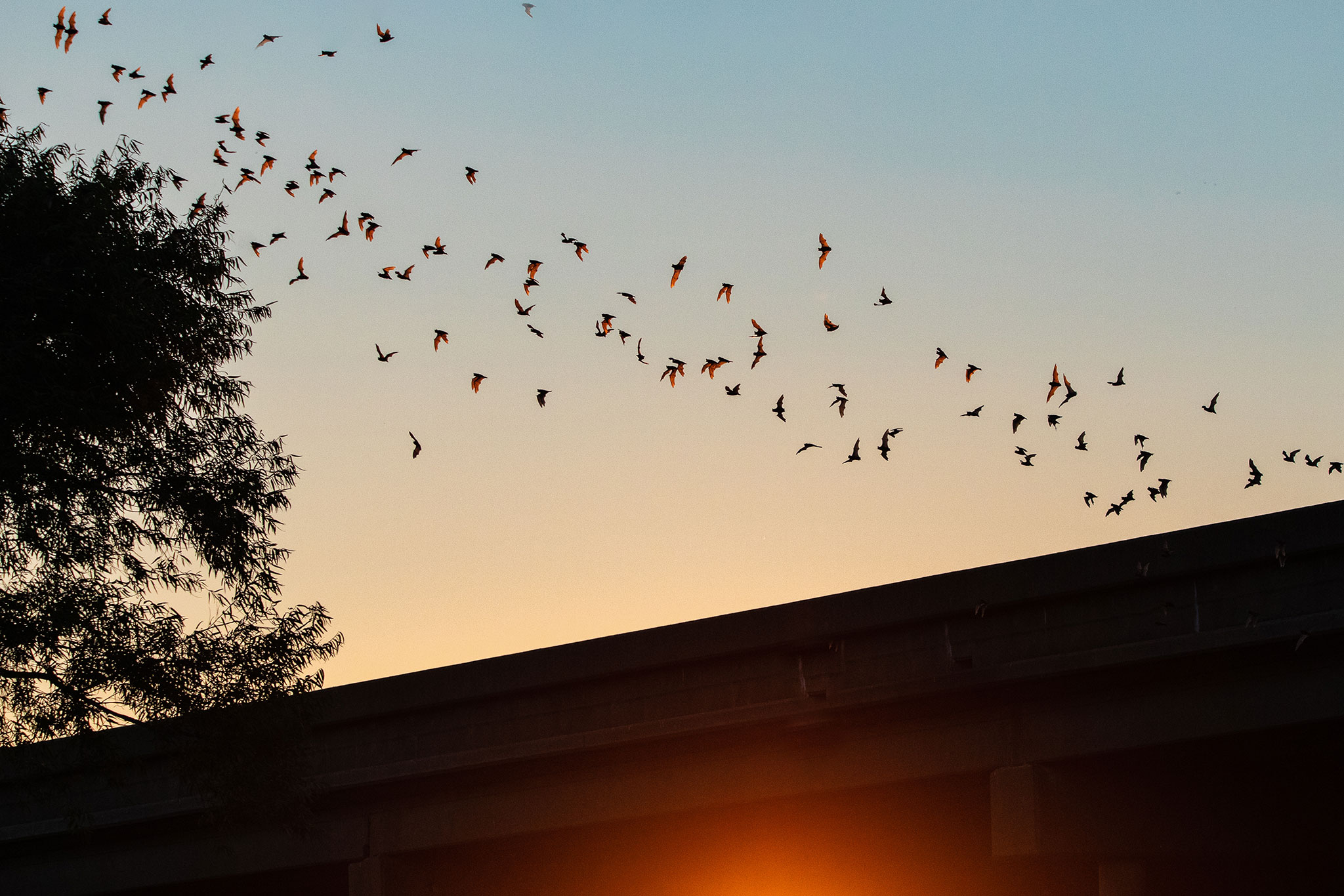What kind of bats live in Texas?
Texas is home to as many as 33 different species, with around nine to 12 types found in the Waco area. The Mexican Free-Tailed Bat is the most common, but you may also find Big Brown, Evening, Tri-Colored, or Cave Myotis bats.
Mexican Free-Tailed Bats were named the official flying mammal of Texas and are so abundant in some areas that people flock to see them. One such location, Bracken Cave Preserve, is estimated to house 15 million or more of these creatures. It is believed to be the largest bat colony in the world. Nocturnal in nature, they will hide out all day, exiting the cave en masse at dusk in search of food, making for an awesome sight.
Most species that call Texas home do not hibernate. Instead, they are migratory, coming in search of warmer temperatures in spring before heading further south for winter. As mentioned above, colonies will seek out caves and make their home under bridges or overpasses. Not all types live in colonies, as some species prefer to live a solitary life and may opt for a well-shaded tree or small crevice during the day.
What do bats in Texas eat?
Fortunately for residents, all of the species found in Texas eat insects. In fact, just one can consume half its body weight in bugs in a single night. Despite the popular myth, bats are not blind. While their eyes are better suited for the dark, they still cannot see well enough to zero in on a tiny mosquito flying through the air in front of them, which explains why they evolved the ability to use echolocation. They use clicks and chirps that bounce off objects and prey, allowing them to determine their location with amazing accuracy.
Farmers benefit from these flying mammals as they help protect crops from insect damage. Though some bats eat fruit, none of them live in Texas. That’s not the meal that gets everyone talking though, is it? Spooky stories of Vampire Bats have made them folklore legends and the unofficial mascot of Halloween.
Are Vampire Bats real?
Vampire Bats are very real, but you won’t find any living in Texas. These blood-drinking mammals are mostly found in South America, with a few extending into southern Central America. While they do feast on the blood of animals, it’s done so in small quantities. Scouts even prevent attacks on the same animal until it has had time to recover from previous blood loss.
Sorry folks, Vampire Bats just aren’t out for human blood.
Do bats carry diseases?
Bats are generally not aggressive toward humans, but that doesn’t mean they can’t be harmful or dangerous. Bats, including those found in Texas, can carry rabies. Stay safe and steer clear of any that you come across and keep curious pets away.
A bat with rabies may appear sick or act abnormally, coming out during the day. They may fall to the ground when infected, but that isn’t the only reason. Bats struggle to take flight from a ground position, so having a professional evaluate them and help them reattach to a local tree or roost may be all that’s needed.
Bat droppings, called guano, can potentially harbor fungal spores that cause the lung disease histoplasmosis. If you find guano in your home, leave the cleaning and removal to a professional. Do not attempt to move or touch any bat you come across, whether in your home or in the wild.
What should you do if you find a bat in your house?
While you may not want these critters taking up residence in your home, there are laws regarding how they should be treated. Their existence is considered more important to the ecosystem than the threat they pose to humans. Since bats are mostly misunderstood and offer humans protection from an overabundance of insects, professionals are trained to remove them safely and humanely whenever possible.
The best way to keep bats out of your home is to prevent them from getting inside in the first place. They can fit through a hole as small as half an inch wide and can roost in attics or chimneys. Telltale signs include a strong ammonia smell, grease stains on walls from their bodies, and guano.
The experts at 855Bugs can help you remove bats and other wildlife from your home, and seal off access points to prevent further invasions.

